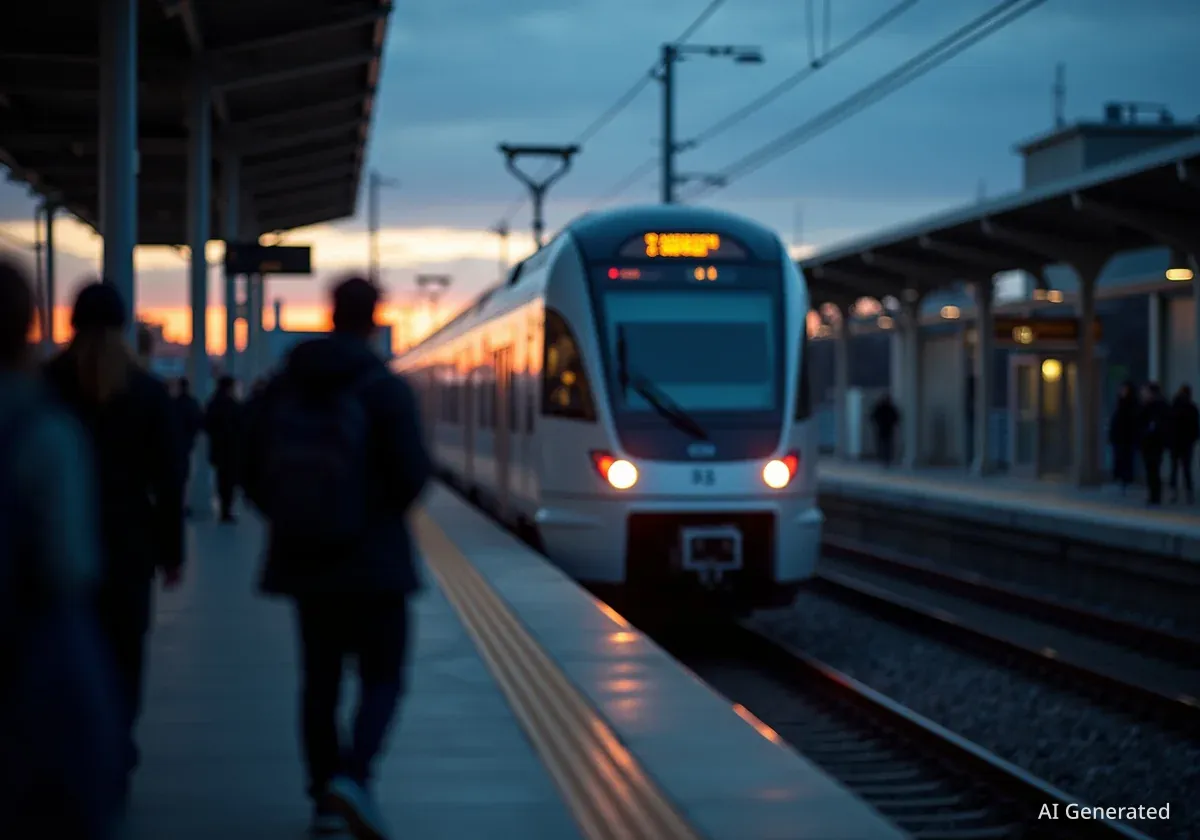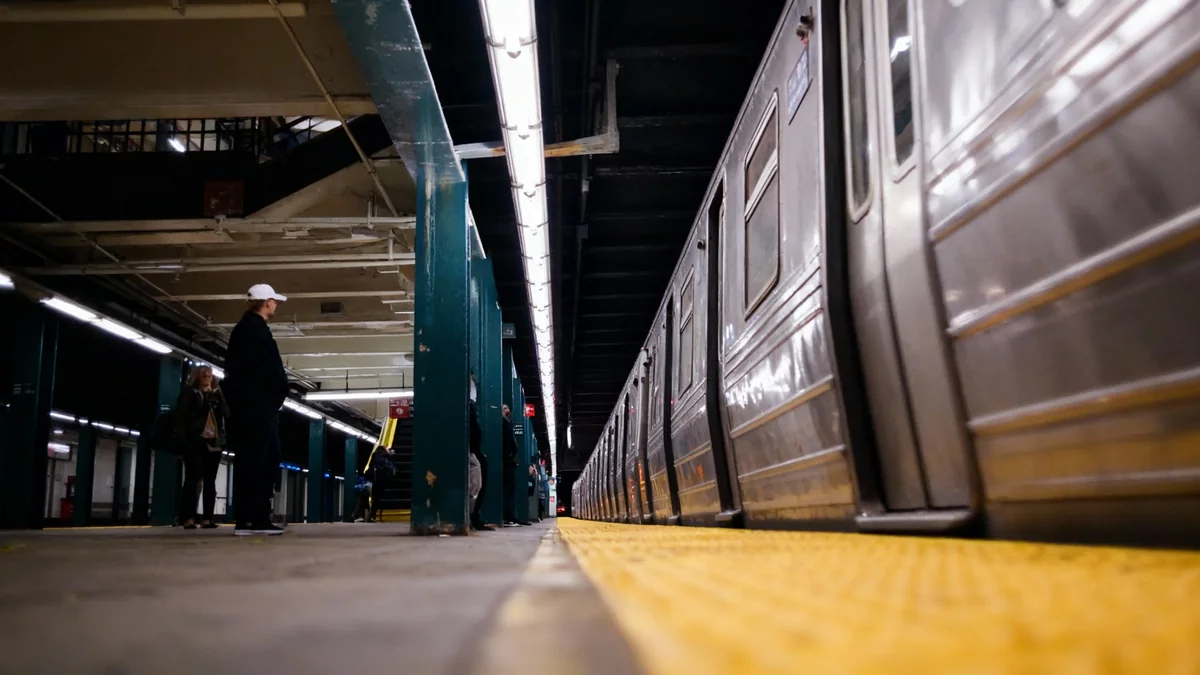Austin's public transit network is set for a major transformation following the Capital Metro board of directors' approval of Transit Plan 2035. This decade-long blueprint aims to reshape nearly every bus and rail line in the region, marking the most significant system overhaul since the 2018 "Cap Remap" changes. The plan focuses on enhancing service frequency and expanding connectivity, particularly for east-west routes.
Key Takeaways
- CapMetro will reduce bus routes from 61 to 55, focusing on higher frequency.
- The plan includes new east-west bus connections and extended operating hours.
- Project Connect promises, including light rail and new rapid lines, are central to the first five years.
- A new Red Line station at North Burnet/Uptown is expected to begin construction in November.
- Some lower-ridership routes and flyer services will be discontinued or converted to on-demand.
Reshaping Austin's Transit Landscape
Capital Metro's Transit Plan 2035 is designed to deliver on the promises of Project Connect, Austin's largest transit expansion. This voter-approved initiative has faced delays and legal challenges but continues to move forward. The new plan prepares the system for a light-rail line, which is scheduled to open in 2033, integrating new infrastructure with existing services.
Over the next ten years, CapMetro will streamline its bus network, reducing the total number of routes from 61 to 55. The strategy behind this reduction is to concentrate resources on the remaining lines, allowing for more frequent service and later operating hours. This shift also prioritizes the addition of new east-west connections, a key request from many riders.
"What excites me the most and what quite frankly I'm most proud of is that we've found a way to improve our services without having more money," CapMetro CEO Dottie Watkins stated before the board vote. "This plan demonstrates fiscal responsibility while still expanding opportunity."
Immediate Priorities and Project Connect Alignment
The first five years of Transit Plan 2035 are dedicated to catching up with Project Connect objectives. These immediate priorities include boosting frequency on the newest pair of Rapid lines to every 10 minutes. This increased frequency aims to reduce wait times significantly for commuters on these key routes.
Fast Fact
- The total number of bus routes will decrease from 61 to 55.
- Frequency on some Rapid lines will increase to every 10 minutes.
- The new North Burnet/Uptown Red Line station is estimated to cost $37.3 million.
Additionally, the plan includes opening new park-and-ride facilities at Expo Center and Goodnight Ranch. These new sites will provide more options for commuters to connect with public transit, reducing reliance on personal vehicles for the entire journey. A long-awaited Red Line stop near the Domain, now named North Burnet/Uptown, is also a priority.
Key Infrastructure Developments
Construction on the North Burnet/Uptown train station is expected to start in November and will take approximately two years to complete. This station, previously known as Broadmoor, was originally scheduled to open in 2024. Delays have pushed CapMetro's share of the cost for this project to $37.3 million, more than triple the initial estimate.
Project Connect Background
Project Connect is Austin's ambitious transit expansion plan, approved by voters to bring light rail, increased bus service, and other mobility improvements to the region. It is funded by property tax revenue and has faced various challenges, including lawsuits and legislative attempts to cut funding.
The new transit map also significantly boosts service on Airport Boulevard's Route 350. Waiting times for this route will be cut in half, from 30 minutes to 15 minutes, and the line will extend directly to Austin-Bergstrom International Airport. This extension provides a more efficient and frequent connection to the airport for residents and visitors.
Furthermore, the plan introduces new east-west lines on Rundberg Lane and Oltorf Street. CapMetro CEO Dottie Watkins highlighted that these connections directly address requests from riders. "Riders have asked for these connections loud and clear," Watkins emphasized, pointing to the responsiveness of the plan to community needs.
Trade-offs and Community Concerns
While the plan brings significant improvements, some services will be discontinued or modified. Several lower-ridership routes, including 5 Woodrow, 233 Decker/Daffan, and 237 Northeast Feeder, will be eliminated or folded into on-demand Pickup service. This change aims to reallocate resources to more heavily utilized lines.
Similarly, several "flyer" routes that offer direct service between neighborhoods and downtown or the University of Texas at Austin campus are slated for discontinuation. Routes such as the 103 Manchaca Flyer, 105 South 5th Flyer, 111 South MoPac Flyer, and 142 Metric Flyer are among those on the chopping block. CapMetro justifies these changes by citing low ridership numbers for these specific routes.
CapMetro board member and city council member Paige Ellis cast the sole vote against Transit Plan 2035. Representing Southwest Austin, Ellis expressed concerns that eliminating flyer routes would make it harder for her constituents to reach downtown. She also pointed to other Project Connect delays, such as a planned rapid route into Oak Hill that has not yet been designed.
"My concerns around Southwest Austin have put me in a position where I feel like I'm being asked to vote away the service that we currently have," Ellis explained. "But I know there's many other things about this transit plan that are bringing a lot of great reliability and service into other parts of the region."
The implementation of Transit Plan 2035 will be a gradual process, with changes appearing in phases over the next decade. Major adjustments to routes will still require further approval from the CapMetro board, allowing for flexibility and potential community input as the plan unfolds.
Looking Ahead: A Decade of Transit Evolution
This comprehensive plan represents a significant strategic shift for Austin's public transit. By focusing on higher frequency and strategic route adjustments, CapMetro aims to create a more efficient and responsive system. The integration of Project Connect elements, especially the light rail and enhanced Rapid lines, promises to modernize the city's urban mobility infrastructure.
The phased rollout means that residents will see changes incrementally, allowing time for adaptation and feedback. While some express concerns about specific route eliminations, the overall goal is to expand opportunity and improve service reliability across the region. The commitment to fiscal responsibility, as highlighted by CEO Dottie Watkins, underpins the plan's approach to achieving these ambitious goals without requiring additional funding.
The success of Transit Plan 2035 will depend on its execution and how well it addresses the evolving transportation needs of Austin's growing population. The emphasis on east-west connections and increased frequency indicates a proactive approach to common commuter challenges, aiming to make public transit a more attractive and viable option for a broader segment of the community.





